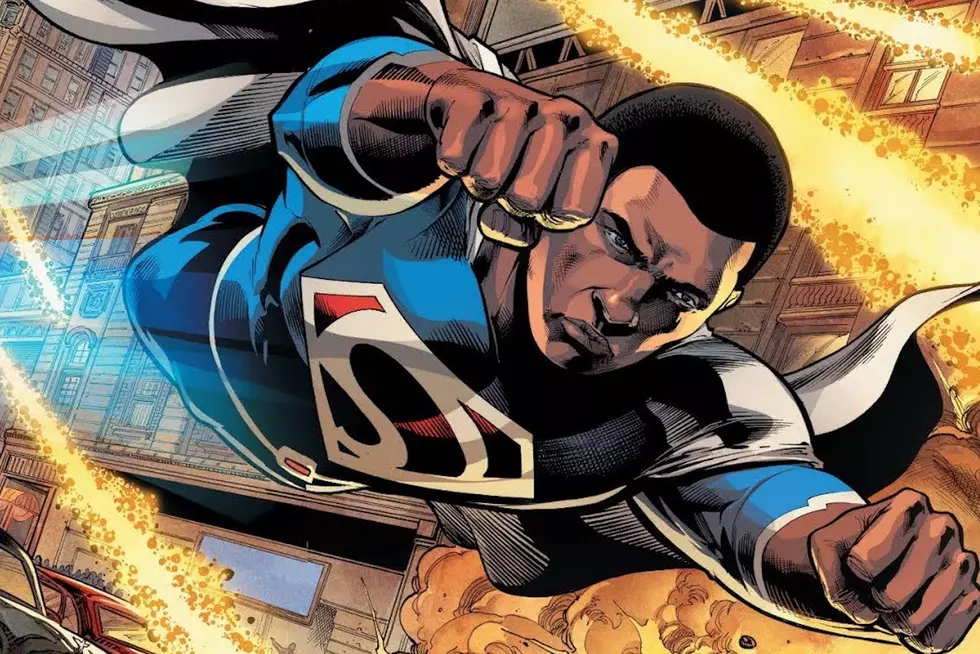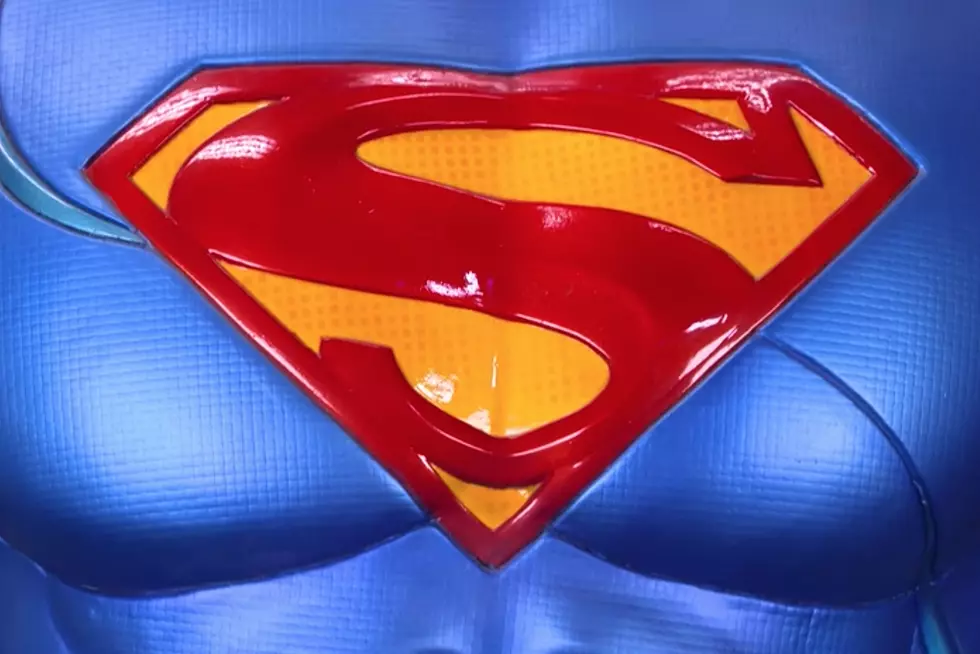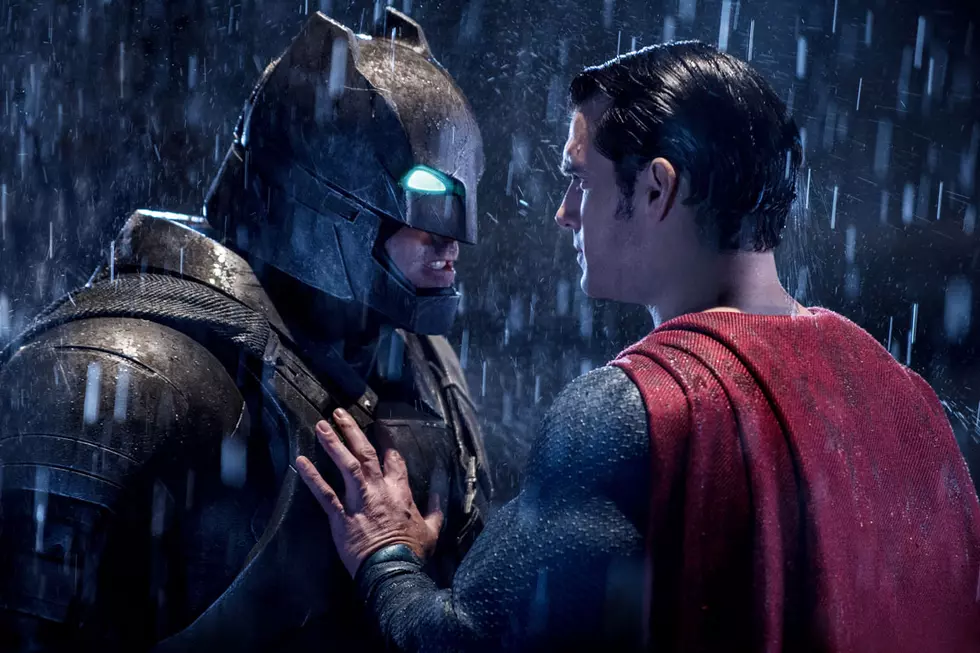
Hot Ink — Siege #3, Hercules: Fall of An Avenger #1, Superman 80-Page Giant #1, American Vampire #1
ComicsAlliance reviews the biggest, best, and most interesting comics that hit the shelves this week. Spoilers follow.
THE DYSLEXIC EXECUTIONER WANTS YOU TO DIE LIKE A GOD - Siege 3/Hercules: Fall of an Avenger 1
 The past one hundred years or so have not been the best time to be a deity. Atheism and agnosticism are on the rise. Scientific discoveries have led to conflicts with long held beliefs. And in general talk of organized faith tends to embarrassingly veer towards one of two topics likely to make your average big bearded man in the sky blush: fanatical religious warfare and child molestation. But we can always some solace can be taken in the knowledge that it's always worse for someone somewhere else. And currently there are few worse places to be a god than the Marvel Universe.
The past one hundred years or so have not been the best time to be a deity. Atheism and agnosticism are on the rise. Scientific discoveries have led to conflicts with long held beliefs. And in general talk of organized faith tends to embarrassingly veer towards one of two topics likely to make your average big bearded man in the sky blush: fanatical religious warfare and child molestation. But we can always some solace can be taken in the knowledge that it's always worse for someone somewhere else. And currently there are few worse places to be a god than the Marvel Universe.
This week several polytheistic belief systems continue on a path that'll leave them monotheistic at best if conditions fail to take a turn for the better. In "Siege" #3, Asgard, the home of the Norse Gods hovering above the ground near Broxton, Oklahoma that's under attack by Norman Osborn and H.A.M.M.E.R., becomes increasingly more "under attack" and increasingly less "hovering above the ground." While in "Hercules: Fall of an Avenger" #1, the surviving friends and relations of the Greek demigod gather to remember him at his funeral, while a rift widens between Hercules' best friend, Amadeus Cho, and the surviving head of the Olympic Pantheon, Athena.
"Siege" opens the third of its four issues with reinforcements arriving to help the forces of Asgard fight off Osborn. The Avengers, working with Nick Fury's Secret Warriors, begin to turn the tide of battle against H.A.M.M.E.R. and by the time Iron Man eventually shows up, things are actually looking encouraging for the good guys. This being the third of four issues, you can be sure that's not going to last. Osborn panics and orders the Sentry to bring down Asgard. Which the Sentry does almost instantly.Worse than that, Osborn fears that the Sentry's now stretched beyond his ability to control, screaming all this time he'd been the only person preventing Marvel's Superman stand-in from killing everyone in sight. The issue starts slow, with the kind of history textbook/epic poetry listing of participants that tends to bore me in big fight scene books ("And lo there was a mighty battle at which the following heroes and villains didst participate and fling one-liners back and forth: Captain America, Ronin, Spider-Man, Luke Cage, Ms. Marvel, the Hood, Madame Masque, Speed, Thor, etc. etc. etc."). But once it gets to the Osborn/Sentry stuff, it vastly improves.
Olivier Coipel and colorist Laura Martin combine efforts and give the Sentry the appearance of an inhumanly frightening monster, and do a great job with Osborn's twisted visage as his plans fall apart. Bendis's writing of Norman, as he finally watches his master plans fall to pieces around him and descends into gibbering madness, is a fitting and terrifying end to his omnipresent villainy during Dark Reign. Massive crossover fight books still aren't my preferred read, and I doubt they'll ever be, but this one does an admirable job of setting the stakes, creating a terrifying threat for the heroes to face, and making me curious about how it'll all wrap up next issue.
 But despite the pleasant surprise of "Siege," I still found the first issue of the two-part miniseries "Hercules: Fall of an Avenger" to be the more enjoyable read, as Greg Pak and Fred Van Lente effectively mix both light-hearted comedy and serious reflection in this fitting farewell to Herc. Amadeus Cho, attending a memorial service at the Parthenon, is alone and angry until Hercules' past friends and acquaintances, including Thor, Namor, Bruce Banner, Namora, Mockingbird and Black Widow, arrive to join him in mourning and remembrance. Tales are told of battles, drinking and women, recounting events all the way from Herc's early appearances up to the "Incredible Hercules" run, until Athena arrives to interrupt Cho's final words and tell him it's time to talk serious business. Cho's hardened attitude towards her suggests her transformation from mentor to antagonist is almost complete, setting the stage for an interesting conflict in his own upcoming series.
But despite the pleasant surprise of "Siege," I still found the first issue of the two-part miniseries "Hercules: Fall of an Avenger" to be the more enjoyable read, as Greg Pak and Fred Van Lente effectively mix both light-hearted comedy and serious reflection in this fitting farewell to Herc. Amadeus Cho, attending a memorial service at the Parthenon, is alone and angry until Hercules' past friends and acquaintances, including Thor, Namor, Bruce Banner, Namora, Mockingbird and Black Widow, arrive to join him in mourning and remembrance. Tales are told of battles, drinking and women, recounting events all the way from Herc's early appearances up to the "Incredible Hercules" run, until Athena arrives to interrupt Cho's final words and tell him it's time to talk serious business. Cho's hardened attitude towards her suggests her transformation from mentor to antagonist is almost complete, setting the stage for an interesting conflict in his own upcoming series.
So while it's clear that the gods won't be disappearing from the Marvel Universe entirely, with Thor continuing to be a central character and Athena likely to play a major role in Amadeus' life, they're getting reduced in number and knocked around pretty hard right now. It does make me a little curious why. There's the alarmist explanation: Marvel's trying to get more mainstream appeal across the USA thanks to its high-profile films. The fact that the gods of the Greek and Norse pantheon show up regularly as characters while Christian religious figures are noticeable in their absence might some day raise some awkward questions from parts of a country which has a significant number of deeply religious citizens.
Still, I don't really buy that argument as influencing Marvel's decisions. It's also possible that in a universe so heavily populated with its own unique characters that Marvel simply got tired of carrying around the borrowed figures of another mythos. But again, I'm not sure I entirely believe that either, as writers like Pak and Van Lente clearly enjoy bringing them in and putting their own twist on them, and they won't be the first or last such creators to want to do so. Maybe with the Age of Heroes about to start, having all those immortal super-beings around gets in the way of humanity rising to its place at the top of the Marvel hierarchy. It's all guesses at this point, and might very well be a coincidence. But I'd be curious to hear other theories on Marvel's sudden war on gods.
LOOK! DOWN, ON THE GROUND! SOMEONE MORE INTERESTING! - Superman 80 Page Giant 1
 And, hey, speaking of gods: Superman. This week DC released a giant-sized 80-page anthology of stories centered around the Man of Steel. Over the years, Superman's connection to religions, particularly the traditions of Christianity and Judaism, have been heavily discussed. There's the repeated point about how baby Kal-el's escape from death in a rocket from Krypton is a parallel to baby Moses' escape from death in a basket on the Nile river. There's the thoroughly discussed aspect of Superman as a savior figure sent from above to protect all people. Not to mention the fact that Superman t-shirts and tattoos, while not perhaps as numerous as crosses, are probably not far behind in number. There's even a brief but interesting examination of whether or not Superman should be considered God or Man in one of the stories here, written by Jason Hall with art by Julian Lopez.
And, hey, speaking of gods: Superman. This week DC released a giant-sized 80-page anthology of stories centered around the Man of Steel. Over the years, Superman's connection to religions, particularly the traditions of Christianity and Judaism, have been heavily discussed. There's the repeated point about how baby Kal-el's escape from death in a rocket from Krypton is a parallel to baby Moses' escape from death in a basket on the Nile river. There's the thoroughly discussed aspect of Superman as a savior figure sent from above to protect all people. Not to mention the fact that Superman t-shirts and tattoos, while not perhaps as numerous as crosses, are probably not far behind in number. There's even a brief but interesting examination of whether or not Superman should be considered God or Man in one of the stories here, written by Jason Hall with art by Julian Lopez.
The thing about Superman being godlike, though, is that it can make him a little boring. Look at the Old Testament. For most of it, God's not the main character. The stories that are told revolve around the people who happen to be living in God's world, not the big guy himself. That's because if the stories focused on God, they'd go something like this: And God was challenged by a mighty beast from space that shot lasers from his eyes, and so the Lord thy God did create the sun and punch the monster into it. The end. Gets a little tiring after a while.
Which is probably why the stories I found to be the most entertaining in this
collection were examinations of what it's like to be an ordinary man or woman in a world where an invulnerable, almost perfect being wearing his underpants on the outside saves your city every week, destroying parts of it in the process. In addition to Hall and Lopez's piece, two other stories take that approach. In "Why Metropolis?" written by Pat McCallum with art by Mike Shoyket, a team of bank robbers discusses the benefits and downsides of attempting their chosen line of work in different cities across the DC Universe. And in "On Break", written by Sean Ryan with art by Clayton Henry, the lives Metropolis' high-rise office building workers and construction crews have their brief moments in the spotlight following a fight between Superman and Bizarro.
Of the stories that focused on Superman himself, I was most struck by Kathryn Immonen and Tonci Zonjic's "Patience-Centered Care." I'm still not sure how I feel about this one, but I was amused by the fact that in the story, after Lois is bedridden with a cold, Superman becomes so bored he starts throwing furniture out their apartment's window so he'll have something to catch. It felt entirely out of character, but I got some perverse pleasure out of the unintended implications that 1) Superman has the attention span of a kindergartner, and 2) if Lois is out of action what he misses most is that he can't stop her from plummeting to her death on a regular basis.
NO SIGN OF MOMS, APPLE PIE, HOT DOGS, OR BASEBALL - American Vampire 1
 Vertigo launches its new series this week with issue 1 of "American Vampire". The premiere consists of two stories, one written by the book's creator Scott Snyder, the other written by none other than Stephen King, with artwork for both provided by Rafael Albuquerque. Vampires are particularly hot subjects in fiction right now, with fans of the "Twilight" series desperate for anything with fanged protagonists, and everyone else desperate for a work of fiction to begin the long, slow process of dragging vampires back to a point of respectability in the aftermath of the "Twilight." "American Vampire" would seem to be a positive step forward, although the first stories don't quite give enough of an impression to be sure.
Vertigo launches its new series this week with issue 1 of "American Vampire". The premiere consists of two stories, one written by the book's creator Scott Snyder, the other written by none other than Stephen King, with artwork for both provided by Rafael Albuquerque. Vampires are particularly hot subjects in fiction right now, with fans of the "Twilight" series desperate for anything with fanged protagonists, and everyone else desperate for a work of fiction to begin the long, slow process of dragging vampires back to a point of respectability in the aftermath of the "Twilight." "American Vampire" would seem to be a positive step forward, although the first stories don't quite give enough of an impression to be sure.
You know, it's funny. Every single time a series featuring a vampire fills the need to have an exposition scene where some character takes somebody else aside and explains the rules of vampirism in that particular universe, I roll my eyes. As terms like "stakes", "garlic", "sunlight", "crosses" and "holy water" get thrown around yet again, with someone inevitably saying something to the effect of "it's not like you see in the movies/read in the books," I shake my head and think, "Really, this again?" But then when something like "American Vampire" comes along and doesn't do it, that crutch I'd previously relied on gets ripped away and I can't help but stop thoughts like "Gee, I wonder if they're scared of crosses" or "What's the deal with sunlight and these guys, anyway?" wander uninvited into my brain. It gets in the way of me enjoying the story, although instead of making me angry with this book it simply made me more annoyed with all the other works that created those expectations. "American Vampire" is going to take its time revealing exactly what's going on, and the first stories are an introduction to the characters, not to vampirism.
Which is a bit of a shame because it does leave hanging the question of "What's so especially American about these vampires, anyway?" Snyder's piece is a tale of 1920s Hollywood and how an aspiring actress Pearl Jones met an unfortunate death followed by undeath. A piece of advice for the ladies that fiction should have probably taught you already: if you are ever at a party and are pulled aside and asked to enter a private room where several wealthy and powerful men would like to meet you, be assured that nothing good will ever come of that. King's work, the more entertaining of the two, is set in 1880 Colorado and involves a gang of outlaws ambushing a train to rescue their leader. King does a good job of playing with the reader's expectations, hinting that more than one character might be a vampire before revealing the true identities in the story's resolution.
The first issue promises that the series will be more than a generic vampire tale, but where exactly it's going remains unclear at this point. But I'm going to keep an eye on it. While at the same time trying to stop myself from asking questions like "But can I keep my eye on it with a mirror, or is the no-reflection rule in effect?"
TWO EXCELLENT SERIES CONTINUE TO IMPRESS:
I'd have to say my favorite books from this week are the latest in two series that I've praised in the past. Everything I've said before about "Joe the Barbarian" by Grant Morrison and Sean Murphy and "Choker" by Ben McCool and Ben Templesmith still applies to, respectively, the third and second issue of each. Murphy and Templesmith have both outdone themselves with their artwork. Morrison continues to deftly switch back and forth between Joe's fantasy world and the reality in which he's slowly dying. And McCool's Detective Johnny Jackson continues to impress as a desperate man determinedly keeping up a tough-guy facade. Oh, also he includes a group of overweight cannibals who eat a bus full of the elderly, which may be less frightening than Jackson's new partner and her choice in car decorations.
More From ComicsAlliance









